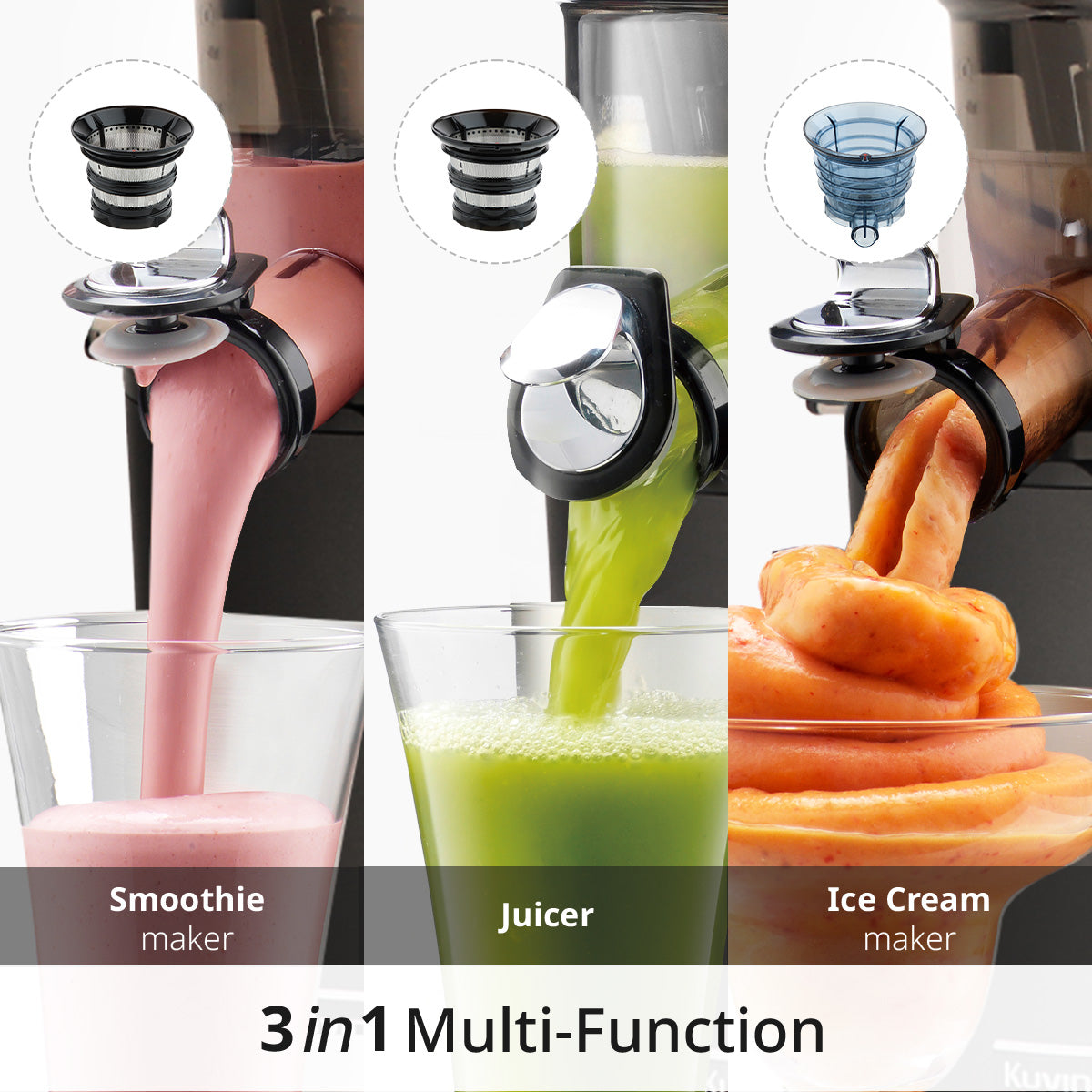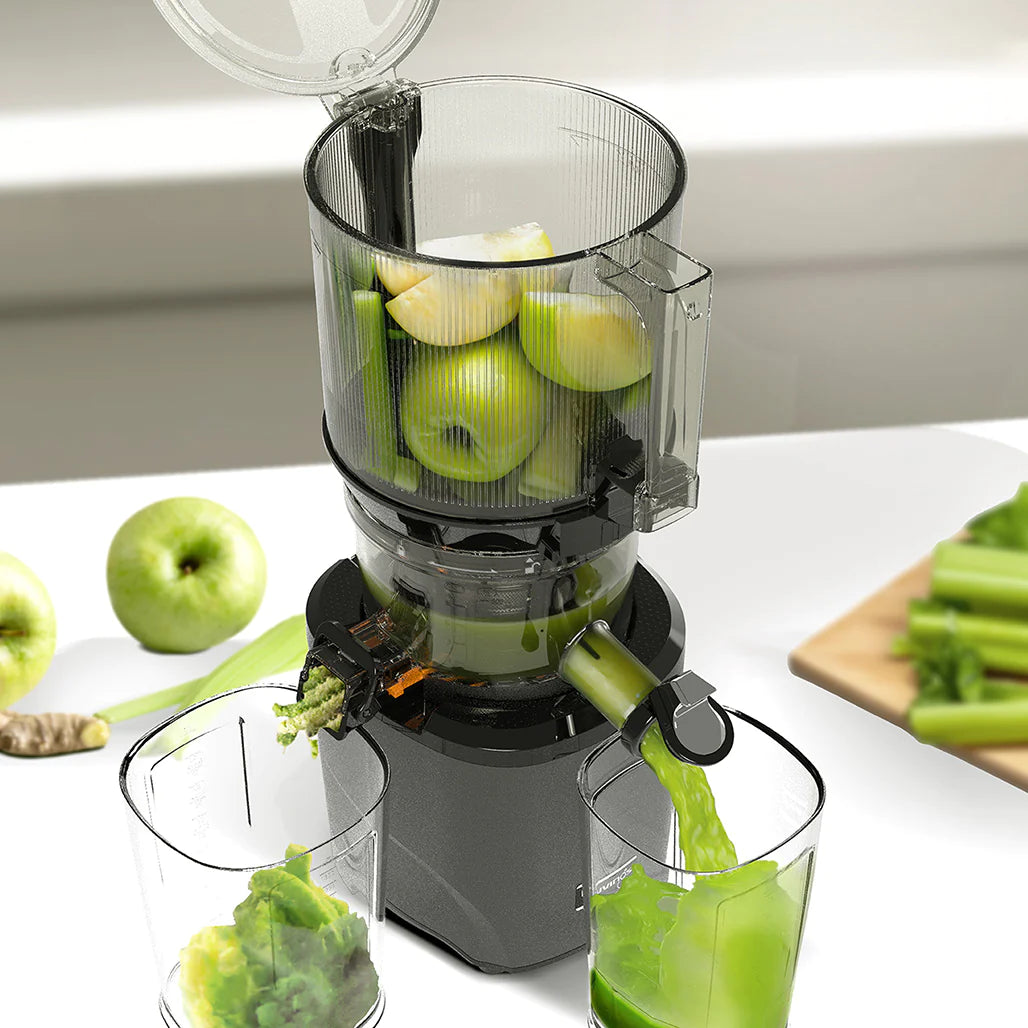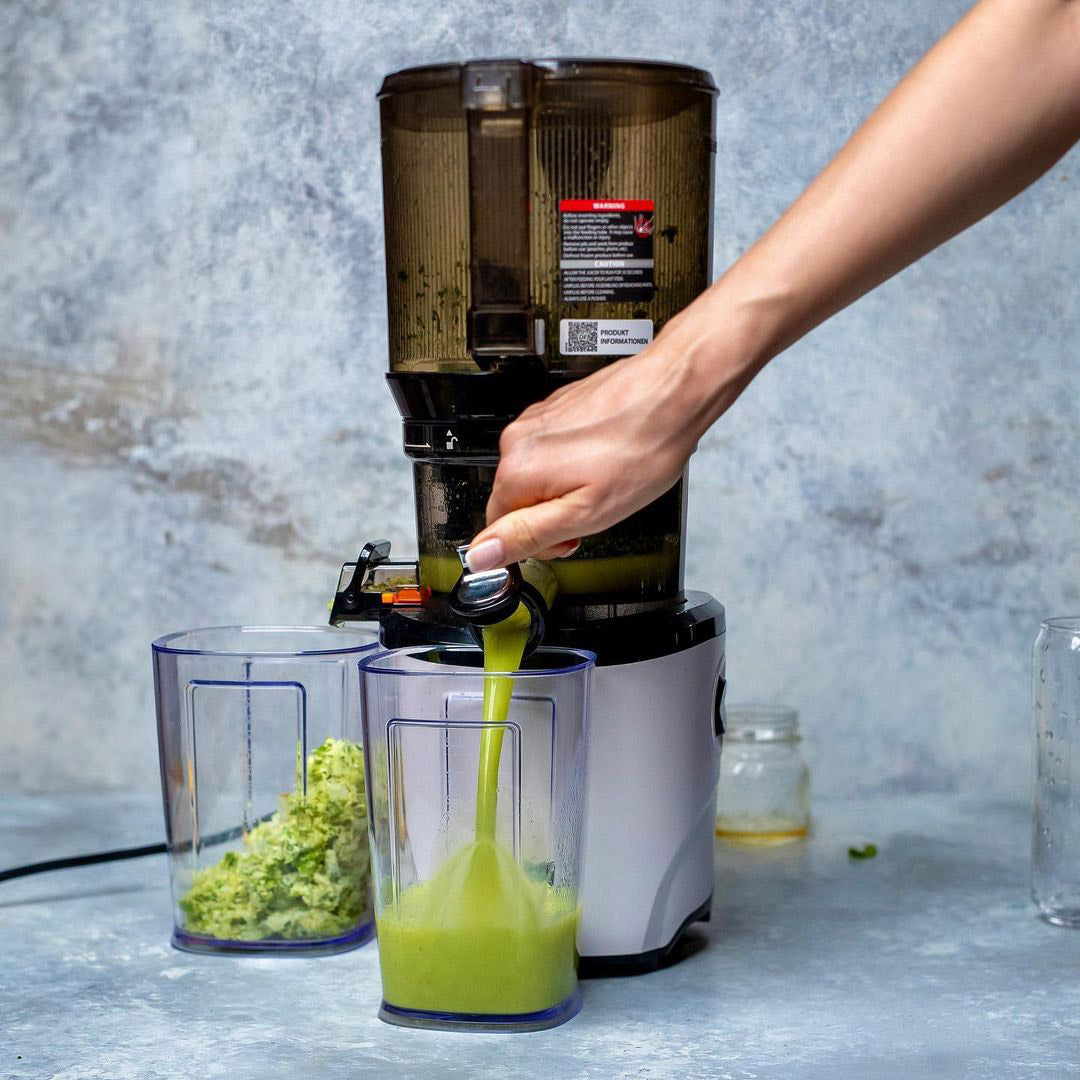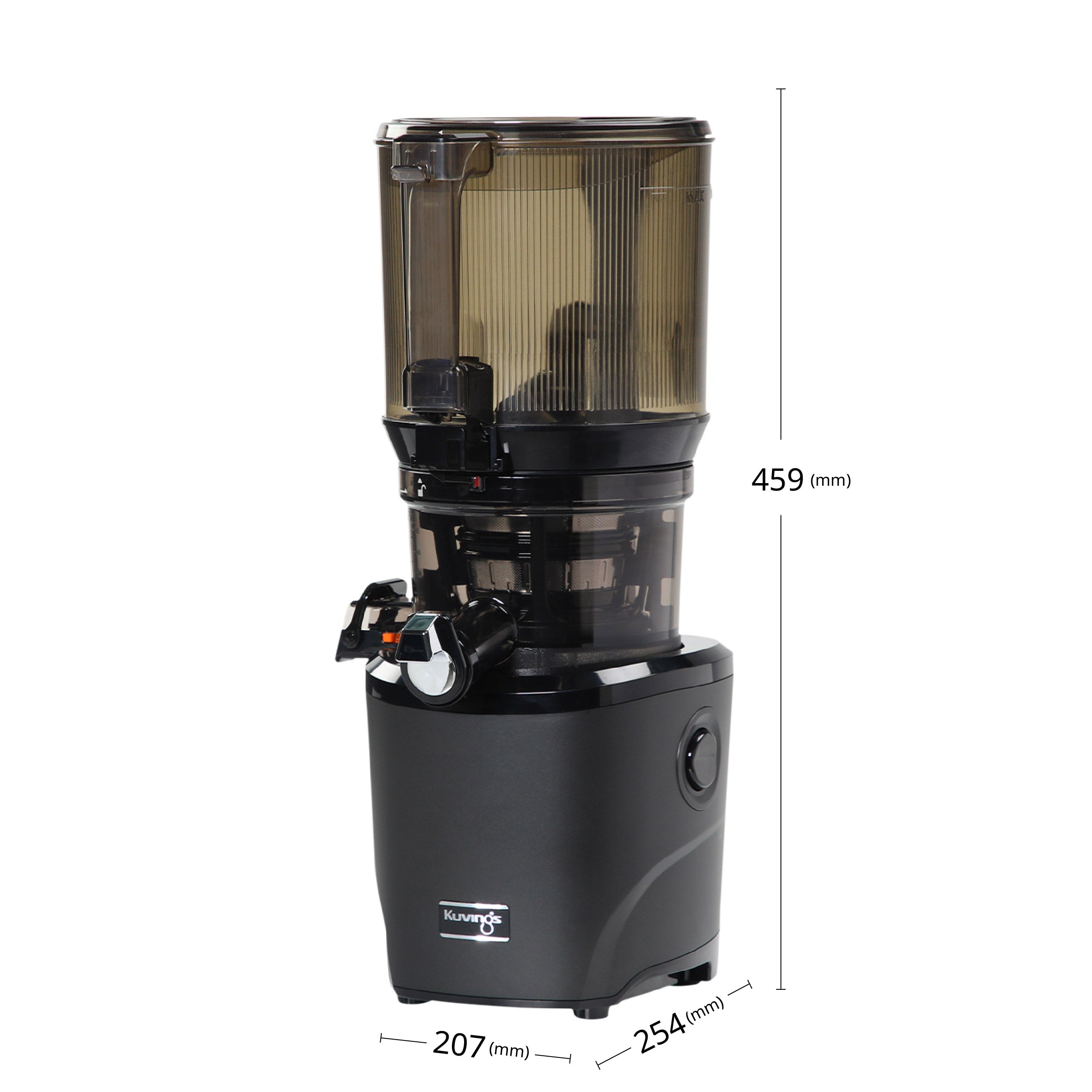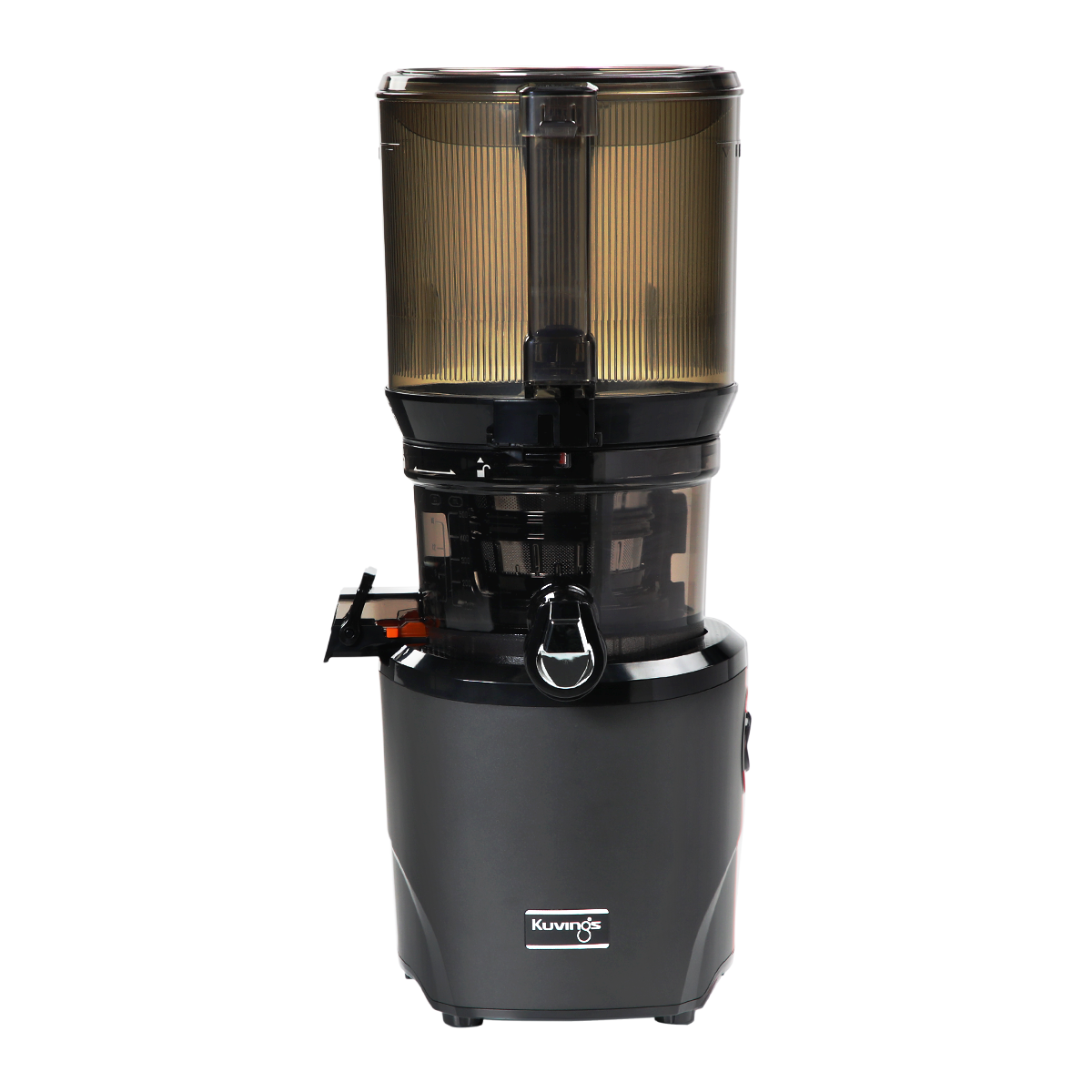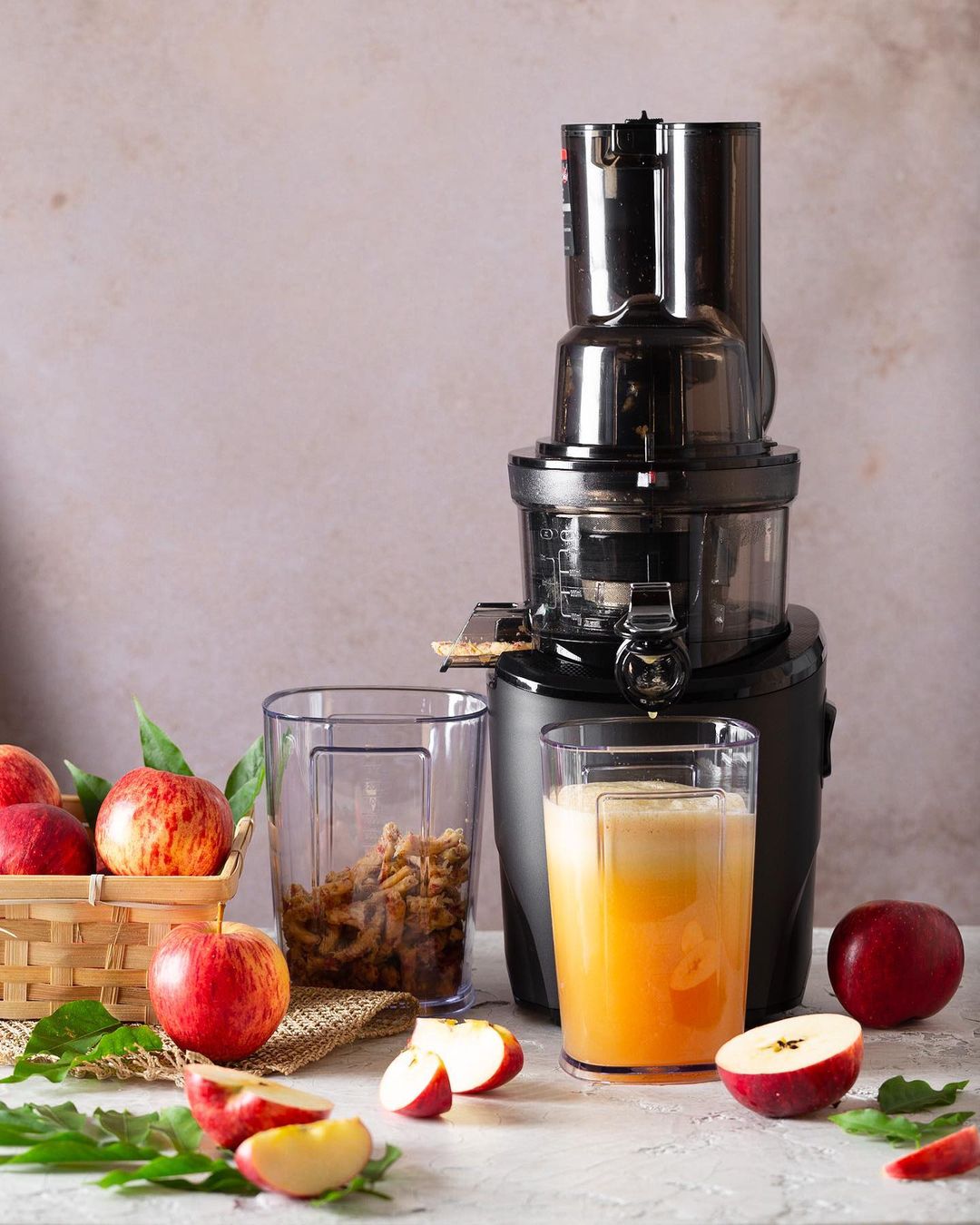SHOULD YOU PEEL YOUR INGREDIENTS BEFORE JUICING?
Not all fruits and vegetables need to be peeled. There are some peels that can be kept on and some that are better removed.
Discover the Wide Array of Fruits and Vegetables for Juicing Beginners. Given the vast array of choices available, it is often overlooked which items should be peeled or left unpeeled. Make Informed Decisions About Peeling Produce for Optimal Nutritional Value.
- How thick is the peel?
- Does the peel have health benefits?
- How will the peel impact the juice’s taste?
- How will the peel impact the juicer's efficiency?
Discover the Art of Efficient Peeling with Simple Tips and Tricks. Unlock the Secrets to a Flawless Juicing Experience.
NO NEED TO PEEL
🍏 Fruits
- Apple
- Apricot*
- Berries
- Cherries*
- Cucumber
- Eggplant
- Grapes
- Lemon
- Lime
- Nectarine*
- Peach*
- Pear
- Pepper*
- Plum*
- Tomato
- Watermelon
- Zucchini
🥕 VEGETABLES
- Beetroot
- Carrot
- Ginger
- Parsnip
- Radish
- Squash
- Sweet potato
- Turmeric
- Turnip
TASTE
Absolutely, you've highlighted a valuable point. Fruits like apples, grapes, and berries are commonly consumed with their peels, and this practice extends to juicing as well. In fact, leaving the peels on can enhance the taste and nutritional value of the juice. The peels of certain fruits, such as lemon zest, contribute a tangy and refreshing flavor, making them a popular addition in various recipes.
This approach aligns with the idea that many fruit peels contain additional nutrients and flavor, making them a beneficial and flavorful inclusion in your juice. It's a great way to maximize the nutritional content and enjoy the full range of tastes that these fruits offer.
HEALTH BENEFITS
Fruit and vegetable peels are rich in health-promoting compounds, with antioxidant levels found to be up to 328 times higher in peels compared to pulps. Retaining the peel, for instance in apples, can provide significantly higher amounts of vitamins K, A, and C, along with increased calcium and potassium. Although not all nutrients may transfer to the juice during extraction, keeping the peel on can offer a valuable boost of nutrients.
THICKNESS
Additionally, certain ingredients such as pears, carrots, and ginger have thin skins that won't clog the juicer. Knowing this, you can streamline your juicing process by leaving the peels on, saving time and effort in preparation. Ensure to wash all produce thoroughly and remove any damaged areas before juicing.
🍉 WATERMELON
Watermelon, surprisingly, can be juiced with its thick skin, particularly the rind, offering various health benefits. Rich in essential nutrients such as vitamin C, vitamin A, vitamin B6, potassium, and zinc, watermelon rind is a low-calorie powerhouse. It also contains chlorophyll, citrulline, lycopene, amino acids, flavonoids, and phenolic compounds, making it a nutrient-dense addition to your daily routine. To enhance the flavor, consider leaving some red flesh on when juicing watermelon rind for a touch of added sweetness.
WHAT ABOUT THE SEEDS?*
It seems like you've shared information about the consideration of seeds in juicing, specifically emphasizing the importance of removing large seeds or pits from stone fruits and addressing the peeling of certain fruits. The explanation also touches on the removal of firm centers from ingredients like mangoes and entirely seed-centered ingredients like pepper, papaya, and pumpkin.
Additionally, the information highlights that small-seeded fruits like lemons, tomatoes, and zucchinis can be juiced without seed removal, and the decision to remove seeds from these fruits is a matter of personal preference. The video you mentioned showcases juicing whole lemons, leaving the peels on and the seeds in, with minimal preparation beyond washing and cutting off the top and bottom of the fruit.
If you have any specific questions or if there's anything else you'd like assistance with regarding this topic or any other, feel free to let me know!
YES, DO PEEL
🍏 Fruits
- Cantaloupe
- Corn
- Honeydew melon
- Orange
- Grapefruit
- Papaya*
- Mango*
- Pomegranate
- Kiwi
- Lychee*
- Passionfruit
- Dragon fruit
🥕 VEGETABLES
- Celeriac
- Garlic
- Jicama
- Kohlrabi
- Onion
- Pumpkin*
- Rutabaga
- Yam
THICKNESS
Thickness is a crucial consideration when juicing certain ingredients. Many items on the list have thick or fibrous skins, presenting a challenge for the juicer. These thick skins can result in clogging or stoppage, negatively impacting the overall efficiency and performance of the juicer.
TEXTURE
Beyond thickness, the rough skin texture of a fruit or vegetable can present challenges during the cleaning process. It may be difficult to completely remove unwanted chemicals and dirt from rough-textured skins. If there are concerns about the thorough cleaning of the skin, it is advisable to err on the side of caution and remove it before juicing. This ensures a cleaner and safer preparation process for your juice.
TASTE
Despite the health benefits of ingredient peels, it's important to consider their bitter taste, which can significantly affect the overall flavor of your juice. When juicing unpeeled ingredients, the peel's flavor and nutrients mix with the extracted juice, impacting both taste and nutrient content. While this may result in a slightly higher nutrient concentration, the bitterness from the peel can make the juice unpleasant and even undrinkable for some. Taking the extra time to peel the produce on this list is worthwhile to ensure a tastier juice that won't be wasted.
🍍 WHAT ABOUT PINEAPPLE?
When it comes to juicing pineapple, the decision to peel or not depends on various factors. While pineapples have a thick outer layer, it typically doesn't clog the juicer. The main concern for clogs arises from the soft pulp obstructing the strainer's holes. Interestingly, the tough texture of the pineapple peel can aid in pushing the soft pulp through the strainer.
To prevent clogging, it's advisable to alternate between soft and hard ingredients while juicing. Fortunately, pineapple peel is not overly bitter, and its inclusion won't compromise the flavor of your juice. In fact, pineapple peels are a valuable source of Vitamin C and bromelain, offering immunity-boosting properties and anti-inflammatory qualities, respectively. Therefore, juicing pineapple with its peel is not a significant concern and can enhance the nutritional content of your juice.
While juicing pineapple peel is feasible, as demonstrated in the video, it's important to consider the preparation process. Ingredients with rough skin textures, like pineapple peel, can be challenging to clean thoroughly. If you prefer not to spend extra time cleaning the peel, it's recommended to peel the pineapple before juicing.
To minimize the risk of clogging while juicing a peeled pineapple, consider juicing the hard core last or along with other hard ingredients. The firm texture of the core and other ingredients can aid in pushing the soft pulp out, reducing the likelihood of clogs.
For more insights into juicing pineapple, you can refer to our blog post "How to Juice Pineapple" for additional tips and information.
RULE OF THUMB
If your ingredient is not on this guide and you’re unsure of if you should peel it or not, try following this tip:
👍🏻 Eat normally with the peel on = unpeeled
👎🏻 Eat normally with the peel off = peel
REFERENCES: www.kuvingsusa.com







